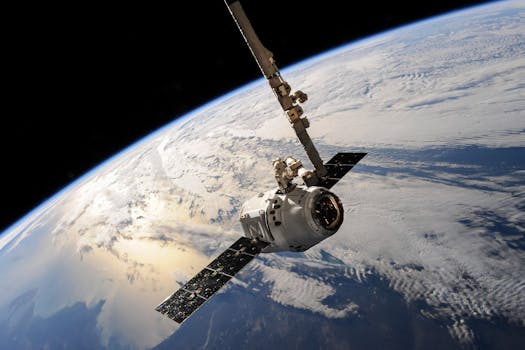
GEO Satellites: The Backbone of Global Connectivity
GEO satellites, or Geostationary Earth Orbit satellites, are a type of satellite that orbits the Earth at an altitude of approximately 36,000 kilometers, remaining stationary relative to a fixed point on the Earth’s surface. This unique characteristic allows GEO satellites to provide continuous coverage of a specific region, making them an essential component of modern communication systems. The focus keyword GEO satellites is used to describe the technology that enables global connectivity, and in this article, we will delve into the world of GEO satellites and explore their applications, benefits, and future developments.
GEO satellites have been in use for several decades, with the first GEO satellite, Syncom 2, launched in 1963. Since then, the technology has evolved significantly, with modern GEO satellites offering high-speed data transmission, advanced navigation, and remote sensing capabilities. The use of GEO satellites has become increasingly important for global connectivity, as they provide a reliable and efficient means of communicating over long distances.
Applications of GEO Satellites
GEO satellites have a wide range of applications, including telecommunications, navigation, weather forecasting, and remote sensing. In the telecommunications sector, GEO satellites are used to provide broadband internet, television broadcasting, and mobile network services. They are particularly useful in areas where terrestrial infrastructure is limited or non-existent, such as in rural or remote regions. The use of GEO satellites for telecommunications has become increasingly important, as they provide a reliable and efficient means of communicating over long distances.
In addition to telecommunications, GEO satellites are also used for navigation purposes. The Global Positioning System (GPS) is a network of GEO satellites that provides location information and timing signals to GPS receivers on the ground. This technology has become essential for modern transportation systems, including aviation, maritime, and land-based navigation. The use of GEO satellites for navigation has revolutionized the way we travel, making it possible to determine our exact location and velocity at any given time.
Benefits of GEO Satellites
The benefits of GEO satellites are numerous. One of the primary advantages is their ability to provide global coverage, enabling communication and navigation services to be accessed from anywhere in the world. GEO satellites are also relatively low-cost compared to other types of satellites, making them an attractive option for organizations and governments looking to establish a presence in space. Additionally, GEO satellites have a long lifespan, typically ranging from 10 to 15 years, which reduces the need for frequent replacement and maintenance.
Another significant benefit of GEO satellites is their ability to provide backup services during natural disasters or other emergencies. In the event of a terrestrial network outage, GEO satellites can provide a reliable means of communication, enabling emergency responders to coordinate their efforts and provide critical services to affected areas. The use of GEO satellites for emergency response has become increasingly important, as they provide a vital link between emergency responders and the public.
Future Developments and Challenges
As the demand for global connectivity continues to grow, the development of new GEO satellite technologies is becoming increasingly important. One of the key areas of focus is the development of high-throughput satellites (HTS), which offer faster data transmission rates and greater capacity than traditional GEO satellites. HTS are expected to play a critical role in the provision of broadband internet services, particularly in areas where terrestrial infrastructure is limited.
Despite the many benefits of GEO satellites, there are also several challenges associated with their use. One of the primary concerns is the risk of satellite congestion, as the increasing number of satellites in orbit creates a greater risk of interference and collisions. Additionally, the deployment of GEO satellites is subject to regulatory restrictions, which can limit their use in certain regions. The use of GEO satellites is also subject to the risk of cyber attacks, which can compromise the security of the satellite and the data it transmits.




